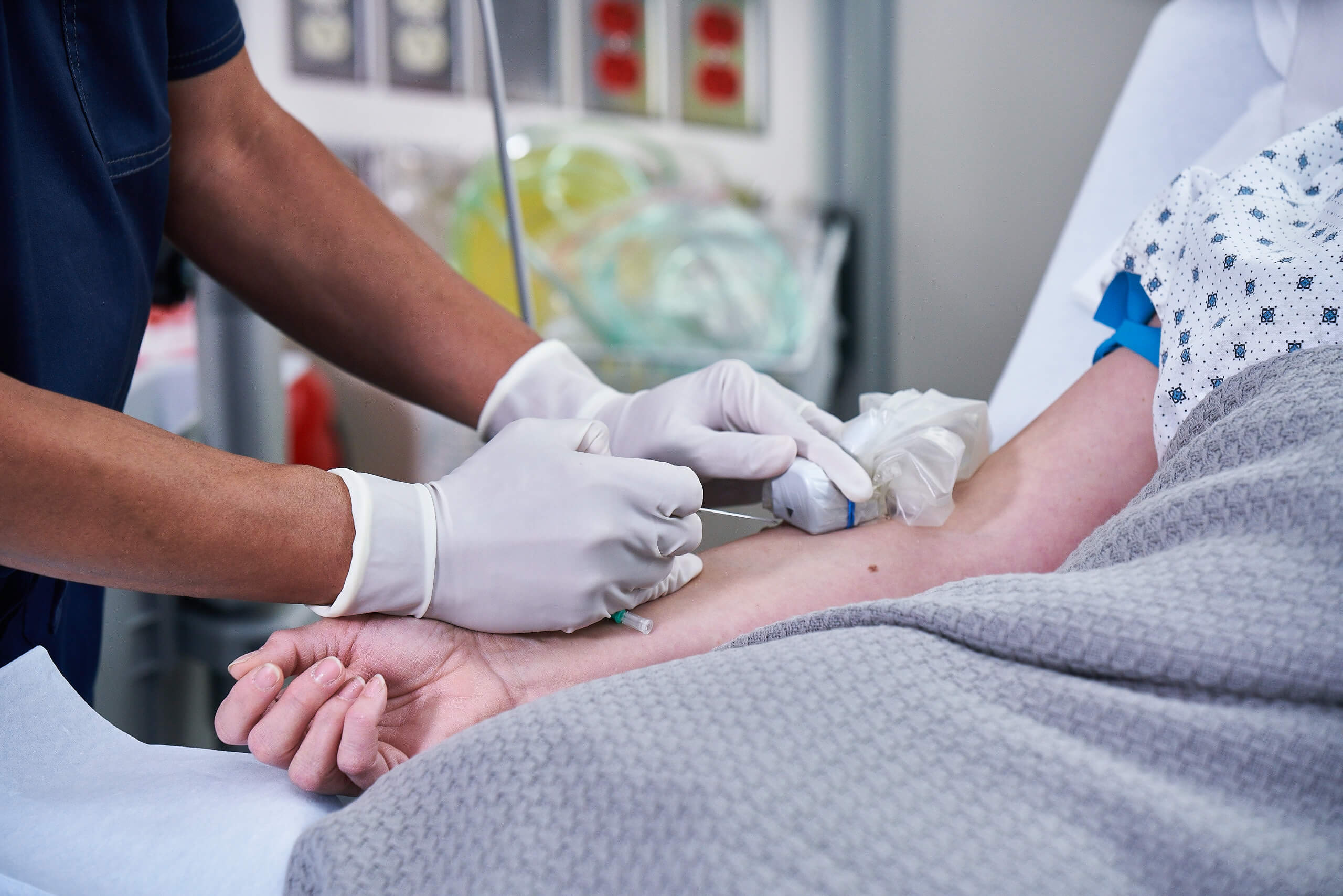Skin antisepsis and peripheral vascular access: Associated risks—BJN podcast episode
This post is intended for a UK audience only
Update your knowledge and skills to avoid the risks associated with peripheral intravenous catheters (PIVC) by listening to this BJN (British Journal of Nursing) podcast episode. Two leading practitioners provide their insight on skin antisepsis and peripheral vascular access.
The BJN podcast hosts regular episodes for a multidisciplinary audience, which includes both specialist and generalist nurses. As the sponsor of the episode and the manufacturer of the only licensed commercially available 2% Chlorhexidine (CHG) 70% Isopropyl Alcohol (IPA) solution in a sterile, single-use applicator for skin preparation—the BD ChloraPrep™,1 skin antiseptic applicator—BD is advancing the world of health.
In the episode, the BJN host Sophie Gardener brings together Simon Clare and Stephen Rowley to discuss the various risks associated with the insertion of peripheral catheters. Simon Clare is the research and development director at the Association for Safe Aseptic Practice and the practice development lead for haematology at the University College Hospital, London. Stephen Rowley is the clinical director of the Association for Safe Aseptic Practice and the senior matron and HCC chair of haematology and cancer at the University College Hospital, London.
Using an aseptic technique is not only the most commonly performed procedure to prevent infection in healthcare, but also the most critical.2 Possible complications, when aseptic techniques are unsuccessful, include Catheter-related bloodstream infections (CRBSIs) which results in significant morbidity and mortality.3
There are two routes for infection: extraluminal and intraluminal.4 Most catheter-related infections are caused by extraluminal contamination from the skin which migrates to the bloodstream after insertion,5 whereas intraluminal contamination is caused by the improper handling of the catheter hub when the device is being connected and disconnected.4
The main ways to prevent infection are properly disinfecting the skin and ensuring there are antiseptic barriers when inserting the catheter.4 Clare and Rowley always support the use of aseptic non-touch technique (ANTT) during invasive procedures to mitigate the risk of infection. ANTT has been shown to improve compliance with the necessary safety steps for aseptic techniques.6
Listen to the podcast to catch their best-practice techniques, their insights on the licencing of products by the Medicines and Healthcare Products Regulatory Agency (MHRA) and the importance of investigating the best technical application of skin antisepsis.
Disclaimer: BD ChloraPrep™ is a medicinally licensed product. For more information, please consult your local BD representative or our
#AsepticNonTouchTechnique #BDChloraPrep #BritishJournalofNursing #Catheterrelatedbloodstreaminfection #extraluminal #infection #intraluminal #peripheralvascularaccess #podcast #skinantisepsis
References
1 BD ChloraPrep™ [SmPC]. https://www.bd.com/en-uk/products/infection-prevention/chloraprep-patient-preoperative-skin-preparation/chloraprep-smpc-pil-msds.
2 Rowley S, Clare S. ANTT: a standard approach to aseptic technique. Nurs Times. 2011 Sep 13-19;107(36):12-4. PMID: 21998936.
3 Rupp ME, Karnatak R. Intravascular Catheter-Related Bloodstream Infections. Infect Dis Clin North Am. 2018 Dec;32(4):765-787. doi: 10.1016/j.idc.2018.06.002. Epub 2018 Sep 18. PMID: 30241718.
4 Sitges-Serra A. Strategies for prevention of catheter-related bloodstream infections. Support Care Cancer. 1999 Nov;7(6):391-5. doi: 10.1007/s005200050298. PMID: 10541980.
5 Salzman MB, Rubin LG. Intravenous catheter-related infections. Adv Pediatr Infect Dis. 1995;10:337-68. PMID: 7718211.
6 Clare S, Rowley S. Implementing the Aseptic Non Touch Technique (ANTT®) clinical practice framework for aseptic technique: a pragmatic evaluation using a mixed methods approach in two London hospitals. J Infect Prev. 2018 Jan;19(1):6-15. doi: 10.1177/1757177417720996. Epub 2017 Aug 4. PMID: 29317909; PMCID: PMC5753945.
Approval number: BD-39118.
BD, the BD logo and BD ChloraPrep are trademarks of Becton, Dickinson and Company or its affiliates.
© 2021 BD. All rights reserved.




